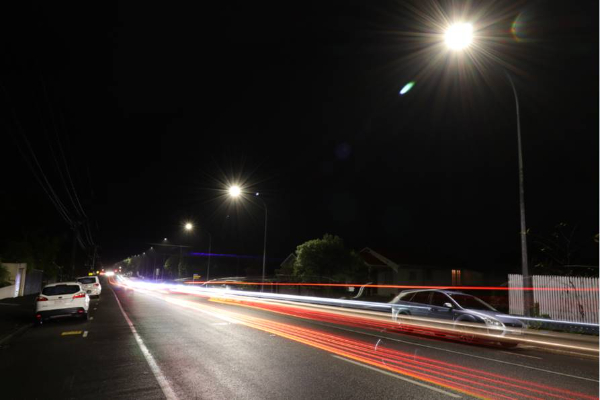Energy Wins A Successful Step In Cutting NPDC Carbon Footprint

Our district is growing, but NPDC has shrunk its carbon footprint over the last 15 years, even while it serves more people.
And our emissions are expected to fall even faster if Councillors greenlight to proposals to Green our Place in the draft 10-year plan.
New Plymouth District had a population of about 69,000 in 2006 and NPDC’s carbon emissions of just over 7,000 tonnes then was expected to hit almost 8,000 tonnes today.
But NPDC’s actual emissions today, even though it now serves more than 80,000 people, are less than half the forecast figure at about 3,500 tonnes thanks to a range of measures including:
- LED street lights that use less than 40% of the electricity of the old street lights.
- A new press that helps dry sludge faster at the Waste Water Treatment Plant (WWTP), cutting gas use by a quarter to make our organic Bioboost fertiliser.
- New technology that uses 18% less energy to treat almost 50% more sewage at the WWTP.
- Upgraded lights and air conditioning that have halved electricity use at the NPDC Civic Centre in Liardet Street.
“We’re gearing up for a low-emissions future, and moves like all-electric rubbish trucks are helping to drive us there, but we’re looking at other things we can do to make our carbon footprint even smaller through our proposed Climate Action Framework and in our draft 10-year work programme,” says NPDC Group Manager Planning and Infrastructure David Langford.
From March 3, the public will be asked for their feedback on the $3 billion draft 10-year plan which focuses on three big areas:
- Fixing our Plumbing which includes introducing residential water meters as part of a broader water savings plan.
- Greening our Place, including the Taranaki Traverse and the Coastal Walkway extension to Waitara, planting a 30 hectare urban forest and NPDC’s vehicle fleet going green.
- Paying it Forward, with NPDC chipping in $40m to a possible multi-purpose sport, event and recreational hub in central New Plymouth.


 Gordon Campbell: On What’s Wrong With The Treaty Principles Bill
Gordon Campbell: On What’s Wrong With The Treaty Principles Bill NZ National Party: National Acknowledges The Passing Of Hon Nikki Kaye
NZ National Party: National Acknowledges The Passing Of Hon Nikki Kaye Mana Mokopuna: Children And Young People Share Vital Insights On Healing From Family Violence And Sexual Violence In New Report
Mana Mokopuna: Children And Young People Share Vital Insights On Healing From Family Violence And Sexual Violence In New Report NZ Government: PM Marks One Year In Government
NZ Government: PM Marks One Year In Government Helen Clark Foundation: Helen Clark Foundation Calls For Political Action To Reduce The Prevalence Of Junk Food And Improve Health Outcomes
Helen Clark Foundation: Helen Clark Foundation Calls For Political Action To Reduce The Prevalence Of Junk Food And Improve Health Outcomes Justice Committee: Further Decisions About Submissions Process For The Principles Of The Treaty Of Waitangi Bill
Justice Committee: Further Decisions About Submissions Process For The Principles Of The Treaty Of Waitangi Bill Infrastructure New Zealand: Single Agency Needed To Coordinate Climate Adaptation And Recovery
Infrastructure New Zealand: Single Agency Needed To Coordinate Climate Adaptation And Recovery


